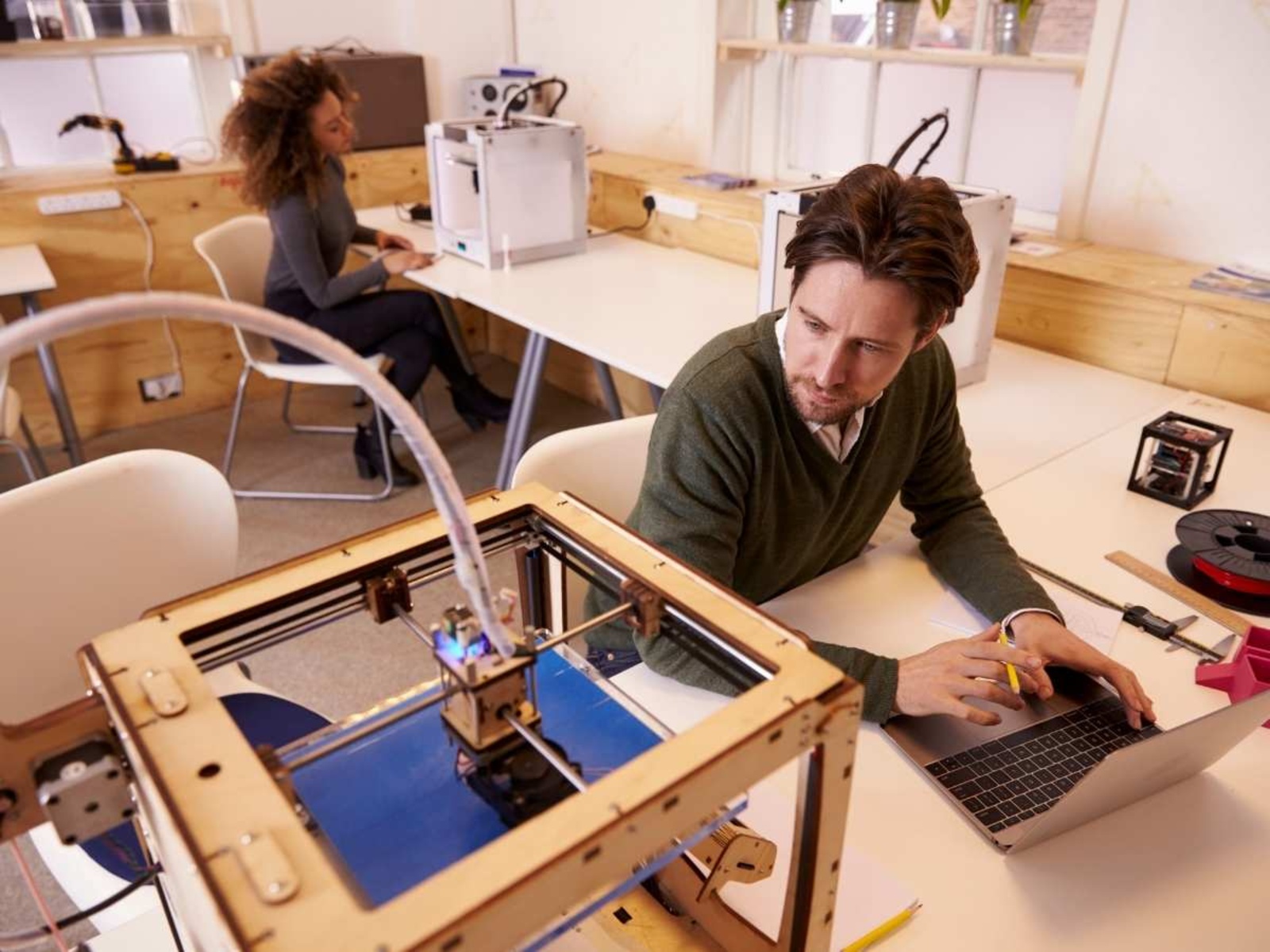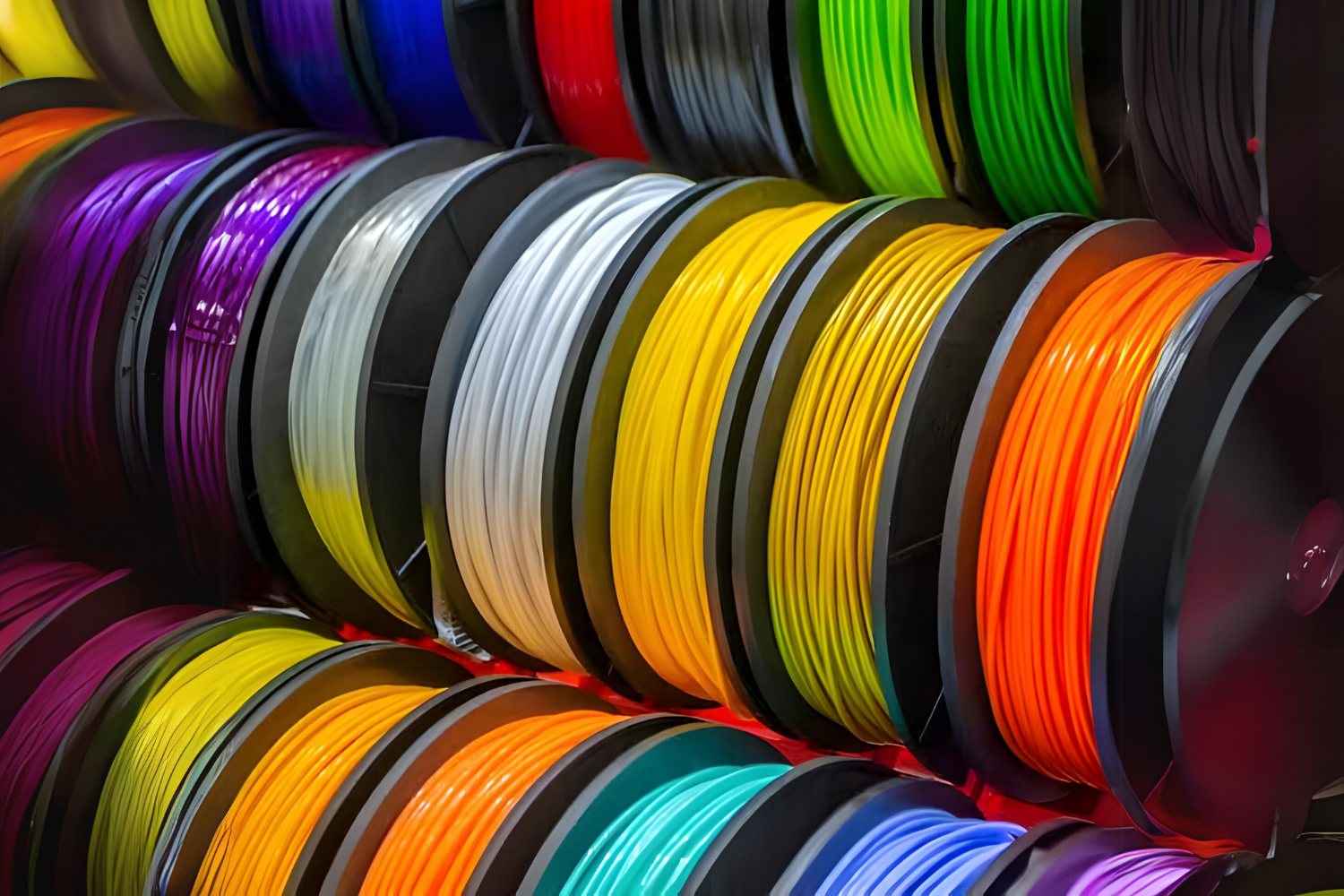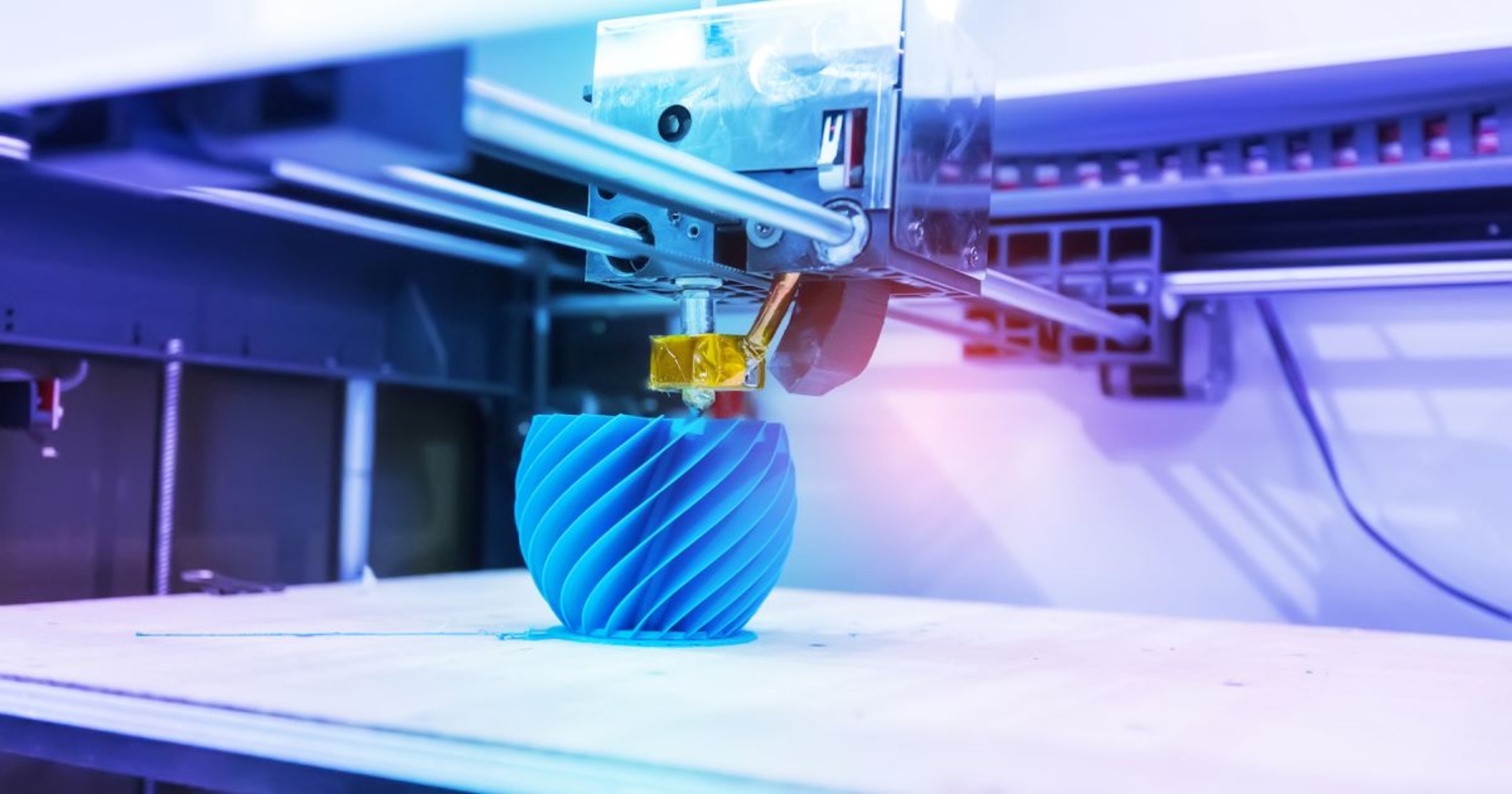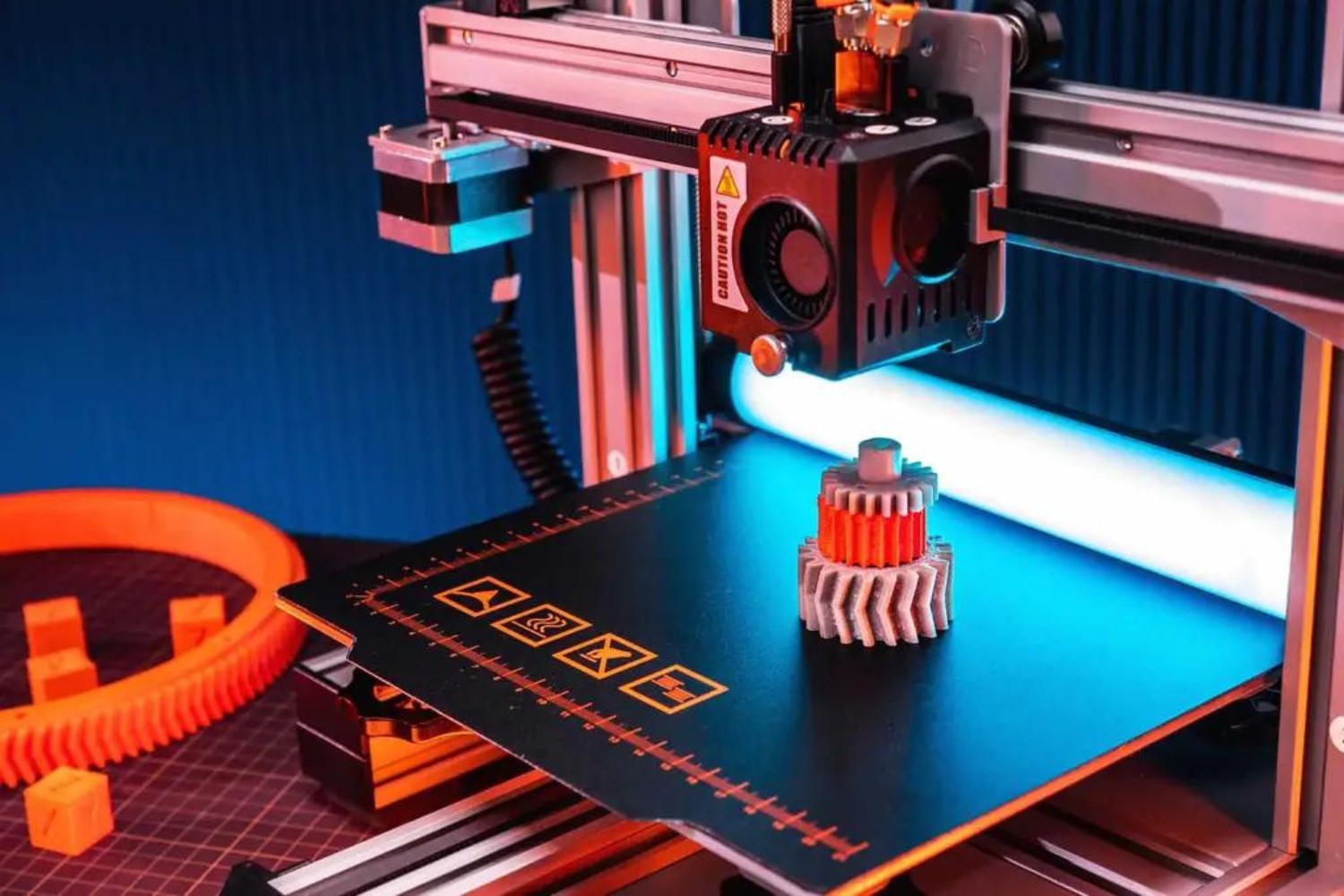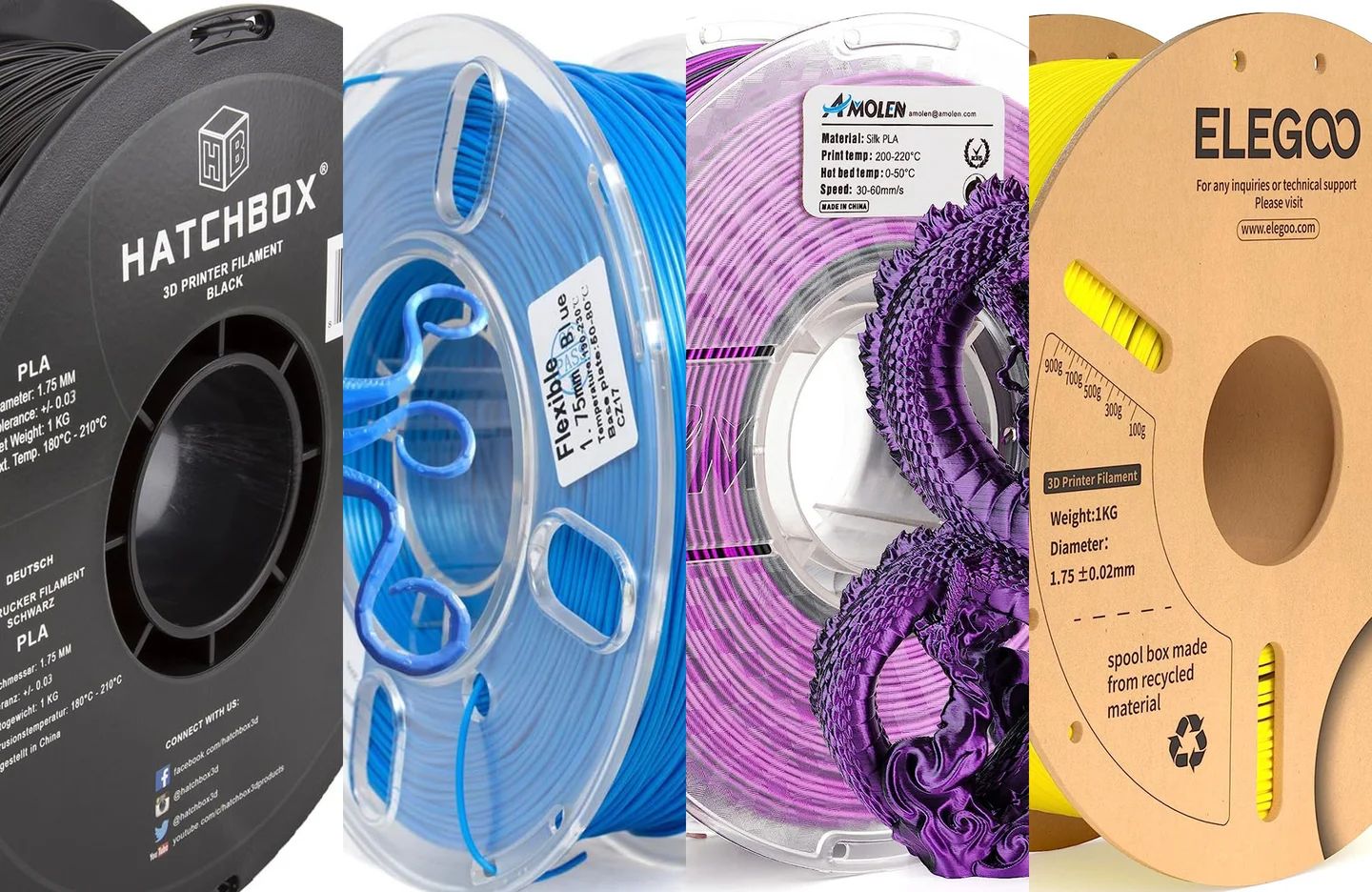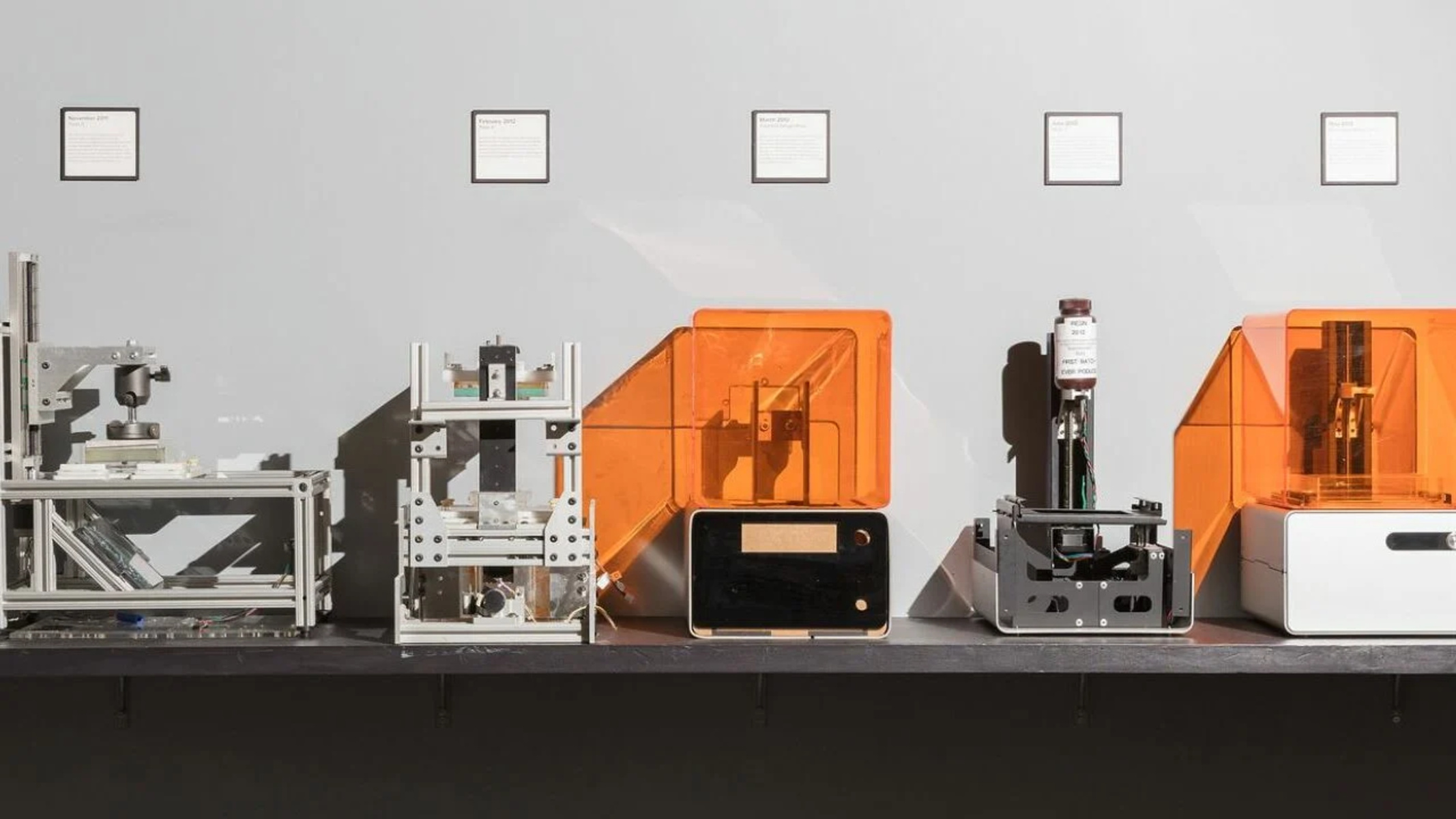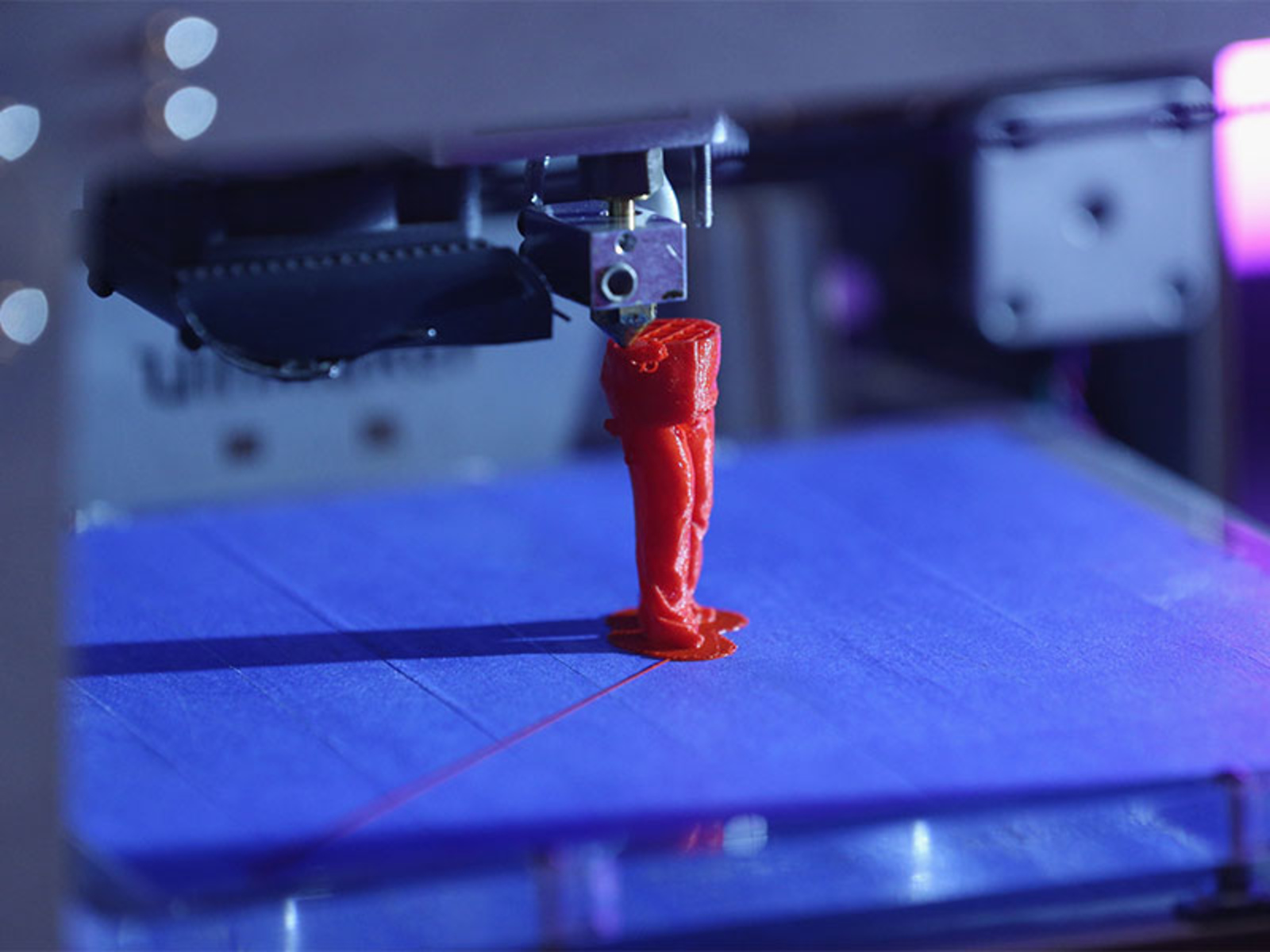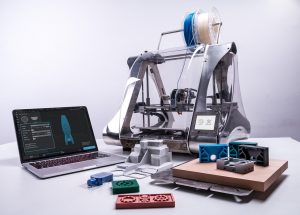Introduction
3D printing, also known as additive manufacturing, has been making significant strides in recent years. This revolutionary technology has the potential to transform various industries, from manufacturing to healthcare, by enabling the creation of three-dimensional objects from digital files. From simple prototypes to complex components, 3D printing has opened up new possibilities for design, production, and customization.
The concept of 3D printing can be traced back to the 1980s. However, it is only in the past decade that it has gained significant attention and popularity. With advancements in hardware and software, coupled with decreasing costs, 3D printing is becoming more accessible to individuals, small businesses, and large corporations alike.
The ability to produce objects layer by layer using materials such as plastics, metals, and even biological substances has revolutionized the manufacturing process. It offers advantages such as reduced waste, increased design flexibility, and shortened production cycles. This technology has the potential to disrupt traditional manufacturing methods and reshape supply chains.
Furthermore, 3D printing has extended its reach beyond manufacturing. It has found applications in medicine, aerospace, automotive, architecture, fashion, and the arts. From printing prosthetic limbs and dental implants to constructing intricate architectural models and creating customized fashion pieces, the possibilities seem endless.
However, despite the tremendous advancements and potential benefits, 3D printing still faces several challenges. These challenges include limited material options, slower production speeds compared to traditional manufacturing methods, and regulatory hurdles. Additionally, the cost of high-quality 3D printers and materials can still be prohibitive for many businesses and individuals, especially in developing countries.
While 3D printing has made significant progress, it is not yet considered mainstream. However, there are indications that it is moving in that direction. With the continued advancement of technology, cost reductions, and the discovery of new applications, we may soon witness the widespread adoption of 3D printing. The question remains: when will 3D printing become mainstream?
In this article, we will explore the factors that contribute to the mainstream adoption of 3D printing. We will examine the advancements in technology, decreasing costs, expanding applications, and the impact on industries. We will also discuss the challenges and limitations that need to be addressed for widespread adoption. Finally, we will speculate on the future of 3D printing and provide insights on when it may become a ubiquitous manufacturing technology.
Advancements in 3D Printing Technology
Over the years, there have been significant advancements in 3D printing technology, allowing for more sophisticated and precise manufacturing processes. One of the key advancements in this field is the improvement of printer resolution. Higher resolution enables the creation of detailed and complex objects with finer features, surpassing the limitations of traditional manufacturing methods.
Another area of advancement is in the range of materials that can be used for 3D printing. Initially restricted to plastics, 3D printers can now work with a wide variety of materials, including metals, ceramics, and even biological substances. This expansion of material options opens up new possibilities for creating functional and customized objects.
Furthermore, the speed of 3D printing has greatly improved. Early models had relatively slow production rates, making them impractical for large-scale manufacturing. However, with innovative technologies such as digital light processing and continuous liquid interface production, print speeds have increased significantly, making 3D printing more viable for mass production.
In addition to advancements in hardware, software has also played a crucial role in enhancing the capabilities of 3D printing. Design software has become more intuitive and user-friendly, enabling individuals with minimal technical expertise to create complex 3D models easily. The integration of artificial intelligence and machine learning algorithms has further improved the efficiency and accuracy of the printing process.
Another exciting development is the emergence of multi-material 3D printing, where different materials can be combined in a single print job. This capability opens up new avenues for creating objects with diverse properties, such as combining rigid and flexible elements or incorporating conductive materials for electronics applications.
Furthermore, large-scale 3D printing has become more accessible with the development of gantry-style printers and robotic arms capable of printing in a larger build volume. This advancement allows for the creation of bigger objects, including building components and even entire structures, revolutionizing fields such as architecture and construction.
Overall, the advancements in 3D printing technology have propelled the technology forward, making it more precise, versatile, and efficient. As this technology continues to evolve, we can expect to see even more innovative applications and widespread adoption in various industries.
Decreasing Costs of 3D Printers
One of the key factors contributing to the potential mainstream adoption of 3D printing is the significant decrease in the cost of 3D printers. In the early days of this technology, 3D printers were only accessible to large corporations and research institutions due to their high price tags. However, as the market has evolved, prices have dropped substantially, making 3D printers more affordable for a wider range of users.
Advancements in manufacturing processes, increased competition among manufacturers, and economies of scale have all contributed to the reduction in costs. Today, there are many options available at various price points, ranging from affordable consumer-grade printers to high-end professional-grade machines.
Consumer-grade printers, aimed at hobbyists, educators, and small businesses, have witnessed the most significant price drops. These printers are now available for a few hundred dollars, making them accessible to individuals with limited budgets. While these printers may not offer the same level of precision and speed as professional-grade machines, they still provide a valuable entry point into 3D printing.
Professional-grade 3D printers, used in industries such as aerospace, automotive, and healthcare, have also become more affordable. Factors such as improved manufacturing processes and increased competition have contributed to the reduction in prices, making these printers more accessible for businesses of all sizes.
In addition to the printers themselves, the cost of 3D printing materials has also decreased. This includes a wide range of filaments, resins, and powders that can be used for different applications and end products. Lower material costs have further democratized 3D printing, allowing more users to experiment with different materials and create functional prototypes or final products at a fraction of the cost.
The decreasing costs of 3D printers not only make them more accessible to individual hobbyists and small businesses but also enable larger organizations to adopt this technology on a larger scale. As the upfront investment becomes more reasonable, it becomes easier for companies to justify the implementation of 3D printing in their manufacturing processes, leading to increased adoption rates.
While there are still higher-end 3D printing systems with higher price tags, the overall trend of decreasing costs makes 3D printing a more feasible and attractive option for a wider range of users. This affordability factor, coupled with the potential cost savings in design iterations, customization, and reduced waste, positions 3D printing as an increasingly viable choice for businesses seeking to innovate and streamline their manufacturing processes.
Expanding Applications of 3D Printing
3D printing has gone beyond its initial applications and is now being utilized in a wide range of industries, opening up new possibilities for innovation and customization. The expanding applications of 3D printing demonstrate its versatility and potential to disrupt traditional manufacturing methods.
In the field of healthcare, 3D printing has revolutionized the production of prosthetics and implants. Customized and patient-specific solutions can now be easily created, accounting for individual anatomical variations. This technology has not only improved the fit and function of these medical devices but has also reduced the time and cost associated with traditional manufacturing methods.
Another area where 3D printing is making a significant impact is in the aerospace industry. It allows for the creation of complex and lightweight components, reducing the overall weight of aircraft and improving fuel efficiency. Additionally, 3D printing enables the rapid prototyping of new designs and the manufacturing of parts on demand, reducing maintenance downtime and supply chain dependencies.
Visualization and design industries are also benefiting from 3D printing technology. Architects and product designers can now create detailed physical models of their designs, allowing them to evaluate form, function, and aesthetics in a tangible and realistic manner.
Furthermore, 3D printing is transforming the automotive industry by enabling the production of unique and customized car parts. It allows for the creation of lightweight and structurally optimized components, improving performance and efficiency. Additionally, 3D printing is being utilized for rapid prototyping, enabling faster design iterations and reducing time to market for new vehicle models.
Even in the culinary world, 3D printing has found its place. Chefs and food scientists are exploring the possibilities of creating intricate and visually stunning food creations using edible materials. This technology opens up new avenues for artistic expression and customization in the culinary realm.
Moreover, 3D printing is being used to create architectural structures and building components. Large-scale printers can construct entire houses, reducing construction time and costs while offering design flexibility and customization options. This technology has the potential to revolutionize the construction industry and address the challenges of housing shortages and sustainability.
The expanding applications of 3D printing extend to many other industries, including fashion, consumer goods, education, and the arts. From creating customized fashion accessories to producing replacement parts for household appliances, 3D printing offers endless possibilities for innovation, personalization, and creativity.
As technology continues to advance and materials become more diverse, we can expect to see even more exciting applications of 3D printing emerge in the future. This increases the potential for widespread adoption across various sectors, further solidifying 3D printing as a transformative manufacturing method.
Impact on Various Industries
The impact of 3D printing is being felt across a wide range of industries, transforming traditional manufacturing processes and revolutionizing the way products are designed, produced, and distributed. This technology offers numerous benefits that have the potential to reshape industries and drive innovation.
In the manufacturing industry, 3D printing has the potential to disrupt supply chains and reduce production costs. Companies can leverage 3D printing to produce parts on demand, eliminating the need for large inventories and minimizing transportation logistics. This just-in-time production model can result in significant time and cost savings, as well as reduced waste due to precise manufacturing and customization options.
The healthcare sector is experiencing one of the most profound impacts from 3D printing. It allows for the creation of patient-specific medical devices, implants, and surgical models that enhance treatment outcomes and reduce the risks associated with traditional methods. Surgeons can now practice complex procedures on accurate 3D-printed replicas, improving surgical precision and patient safety.
The architectural and construction industries are also being transformed by 3D printing. Complex building components can be printed with precision and minimal waste, accelerating the construction process while enabling unique designs and customization. Large-scale 3D printers are being used to construct entire buildings, offering cost-effective and sustainable alternatives to traditional construction methods.
In aerospace and automotive industries, 3D printing allows for the production of lightweight yet structurally sound parts, enhancing performance and fuel efficiency. The ability to create complex geometries that cannot be achieved through traditional methods opens up possibilities for innovation in design and functionality.
The fashion and consumer goods sectors are benefiting from 3D printing’s ability to create customized and personalized products. It enables designers to create intricate and unique fashion accessories, footwear, and jewelry, catering to individual preferences and tastes. Additionally, 3D printing allows for rapid prototyping and shorter time to market, giving designers the flexibility to iterate and experiment with new designs quickly.
Education is another sector that is experiencing the impact of 3D printing. It provides a valuable tool for teaching complex concepts and enhancing hands-on learning. Students can design, print, and test their own prototypes, fostering creativity and problem-solving skills. 3D printing in education helps prepare the workforce of the future, equipping students with skills in design thinking, digital fabrication, and technological innovation.
The arts and entertainment industry have embraced 3D printing as a medium for artistic expression. Sculptors, artists, and filmmakers can create intricate and visually stunning pieces using 3D printing technology. This opens up new possibilities for creativity and blurs the boundaries between traditional art forms and digital fabrication techniques.
The impact of 3D printing on various industries is vast and continues to grow as the technology advances. It offers the potential for increased efficiency, customization, cost savings, and innovation. As more businesses and industries recognize the benefits, we can expect to see a widespread adoption of 3D printing in the coming years.
Challenges and Limitations of 3D Printing
While 3D printing offers significant potential, it also faces several challenges and limitations that need to be addressed for widespread adoption and integration into various industries.
One of the main challenges is the limited range of materials available for 3D printing. Although the selection of printable materials has expanded, it still lags behind the wide variety of materials used in traditional manufacturing processes. Metals, ceramics, and certain high-performance materials are more difficult to 3D print, limiting the scope of applications and industries that can fully benefit from this technology.
Another limitation is the print speed of 3D printers, especially for large-scale and complex objects. The layer-by-layer nature of 3D printing inherently slows down the production process compared to traditional manufacturing methods. While advancements have been made to increase print speeds, further improvements are necessary to compete with the efficiency of mass production techniques.
Quality control and consistency are also challenges in 3D printing. Achieving consistent quality across multiple prints can be difficult due to the sensitivity of the process to factors such as temperature, humidity, and machine calibration. Ensuring dimensional accuracy, surface finish, and structural integrity requires careful monitoring and calibration of the printers and materials used.
Cost is another aspect that can pose a limitation to the widespread adoption of 3D printing. While the overall costs are decreasing, high-quality 3D printers and materials can still be expensive, especially for small businesses and individual users. Additionally, the cost-effectiveness of 3D printing may vary depending on the scale of production and the complexity of the object being printed, making it necessary to carefully evaluate the cost-benefit ratio for each application.
Intellectual property concerns also surround the use of 3D printing technology. The ability to recreate and replicate existing designs and products raises legal and ethical questions regarding copyrights, patents, and counterfeiting. Protecting intellectual property rights in the digital age presents challenges that need to be properly addressed to ensure a fair and competitive marketplace.
Regulatory considerations are another hurdle for the widespread adoption of 3D printing. As the technology evolves and more industries incorporate it into their manufacturing processes, proper standards and regulations need to be developed to ensure product safety, quality control, and environmental sustainability. Regulations for the use of 3D printing in sectors such as healthcare and aerospace are particularly crucial to safeguard patient safety and ensure compliance with industry standards.
Despite these challenges and limitations, research and development efforts are focused on overcoming these obstacles. Ongoing advancements in materials science, robotics, software development, and process optimization are paving the way for addressing these concerns and unlocking the full potential of 3D printing in various industries.
Consumer Adoption and Accessibility
Consumer adoption and accessibility play a vital role in the mainstream adoption of 3D printing technology. As the technology becomes more accessible and user-friendly, it has the potential to reach a wider audience, including individuals, small businesses, and hobbyists.
One of the main factors driving consumer adoption is the decreasing cost of consumer-grade 3D printers. These affordable printers have become more accessible to individuals with limited budgets, allowing them to explore and experiment with 3D printing at home. This has led to a vibrant community of makers, tinkerers, and hobbyists who share their designs and knowledge online, further fueling the interest and adoption of 3D printing.
The accessibility of 3D printing is also being enhanced through user-friendly software and intuitive design tools. The advancement of user interfaces and design software has made it easier for individuals with minimal technical expertise to create and modify 3D models. This has democratized the design process, enabling anyone with creative ideas to turn them into physical objects.
Furthermore, the emergence of online 3D printing marketplaces and service bureaus has significantly increased accessibility. These platforms allow users to upload their designs and have them printed by professionals, removing the need for initial investment in a 3D printer. Additionally, these platforms offer a wide range of materials, finishes, and technologies, allowing users to explore different options and find the most suitable solution for their needs.
Education and awareness also play a crucial role in consumer adoption. As 3D printing becomes integrated into educational curricula, more students and young learners are introduced to the technology and its potential. This exposure cultivates a generation of individuals who are familiar with 3D printing and can apply its principles and techniques in various domains.
However, despite the increased accessibility, there are still barriers that need to be addressed. Some consumers may still perceive 3D printing as a complex and unfamiliar technology, which can deter them from adopting it. Educating consumers about the benefits, possibilities, and limitations of 3D printing is essential to encourage wider adoption.
Moreover, continued improvements in printer reliability, print resolution, and material selection are necessary to enhance the overall user experience and make 3D printing more user-friendly. Streamlining the printing process, providing clear instructions, and offering support and troubleshooting resources can further remove barriers to entry and facilitate consumer adoption.
As consumer adoption of 3D printing continues to grow, the technology will become more integrated into everyday life. From personalized consumer products to on-demand manufacturing and repairs, 3D printing has the potential to empower individuals and transform the way we interact with products and design in the future.
Regulatory and Legal Implications
The widespread adoption of 3D printing technology has not only brought about advances in manufacturing and customization but has also raised important regulatory and legal implications. As this technology continues to evolve and its applications expand, it is crucial to establish proper regulations and address legal challenges to ensure safety, protection of intellectual property rights, and ethical use.
One of the key regulatory considerations is the safety and quality control of 3D-printed objects. Ensuring that products meet certain standards and do not pose risks to consumers is essential. Regulatory bodies need to establish guidelines for the manufacturing and use of 3D-printed products, especially in sectors such as healthcare where the reliability and safety of medical devices and implants are critical.
Intellectual property rights are another area of concern. 3D printing has the potential to infringe upon copyrights and patents, as individuals can reproduce existing designs and objects without proper authorization. It is essential to establish clear guidelines and mechanisms to protect intellectual property in the digital age, balancing innovation and access to 3D printing technology while safeguarding the rights of creators.
Counterfeiting and piracy are additional challenges that arise with the advent of 3D printing. The ease of replicating objects raises concerns regarding the sale of counterfeit products and the potential negative impact on legitimate manufacturers. Developing effective strategies to combat counterfeiting, such as traceability technologies, digital watermarking, and stricter enforcement of intellectual property laws, is crucial to protect businesses and consumers.
Data security and privacy issues also come into play with 3D printing. The digital files used for printing contain valuable intellectual property and personal information. Safeguarding this data and protecting it from unauthorized access or distribution is imperative. Implementing robust cybersecurity measures, secure file transmission protocols, and strict data protection policies is necessary to ensure privacy and prevent potential misuse of sensitive information.
Environmental sustainability is another aspect of 3D printing that requires attention. While the technology can reduce waste compared to traditional manufacturing methods, it is important to address the environmental impact of the materials used in 3D printing, as well as the management of waste generated during the printing process. Developing guidelines and regulations to promote eco-friendly materials, recycling programs, and responsible disposal practices is crucial for long-term sustainability.
As the applications of 3D printing continue to expand, regulatory bodies and legal frameworks need to adapt and evolve. Collaboration between governments, industry stakeholders, and research institutions is necessary to establish a comprehensive and balanced regulatory environment that fosters innovation, protects consumers, and ensures ethical and responsible use of this technology.
Addressing these regulatory and legal implications will create a supportive framework for the continued growth and responsible adoption of 3D printing, unlocking its full potential while mitigating risks and challenges associated with its use.
The Future of 3D Printing
The future of 3D printing holds immense potential for further advancements and integration in various industries. As technology continues to evolve and improve, we can expect to see significant advancements that will shape the future of manufacturing and customization.
One of the key areas of development is the expansion of materials available for 3D printing. Currently, the range of printable materials is growing, but there is still room for further exploration. Advances in materials science will enable the use of more diverse and functional materials, including composites, conductive materials, and biodegradable substances. This will open up new possibilities for creating complex and customizable objects with enhanced properties.
Print speed is another area that will likely see improvement. As technology continues to advance, innovations such as high-speed continuous printing and parallel printing processes may revolutionize the production capabilities of 3D printers. This will lead to faster and more efficient manufacturing, making 3D printing a more viable option for mass production in various industries.
The integration of 3D printing with other technologies, such as artificial intelligence and robotics, will further enhance its capabilities. Intelligent algorithms can optimize designs for 3D printing, reducing material usage and improving structural integrity. Collaborative robots and autonomous systems can enable the seamless integration of multiple processes, such as printing, post-processing, and assembly, creating a more streamlined and automated manufacturing workflow.
The use of 3D printing in healthcare will continue to advance, with the potential for bioprinting organs and tissues becoming a reality. This could revolutionize the field of regenerative medicine and provide new treatment options for patients in need of organ transplants. The ability to create patient-specific implants and medical devices will lead to more personalized and effective healthcare solutions.
Industry-specific applications of 3D printing are also expected to flourish. In aerospace, the production of lighter and more complex components will contribute to improved fuel efficiency and performance. In the automotive sector, 3D printing will enable the creation of customized parts and prototypes, leading to faster product development cycles and enhanced design iterations. Moreover, architecture and construction will see advancements in large-scale 3D printing, making it possible to create sustainable, cost-effective, and customizable structures.
Accessibility and affordability will continue to improve, making 3D printing more accessible to individuals and businesses of all sizes. This will be driven by ongoing efforts to decrease costs, improve user-friendliness, and provide comprehensive educational resources. Consumer adoption will grow as more people incorporate 3D printing into their daily lives, whether for personal projects, manufacturing small-scale products, or simply exploring the creative potential of this technology.
Additionally, 3D printing may redefine the concept of supply chains. On-demand production can alleviate the need for large inventories and long transportations, offering a more sustainable and efficient approach to manufacturing and distribution. This will lead to reduced waste, minimized storage requirements, and increased customization options for consumers.
As with any transformative technology, challenges and ethical considerations will continue to arise. Addressing issues related to intellectual property, safety, regulation, and waste management will be crucial for the responsible and sustainable growth of 3D printing.
Overall, the future of 3D printing is promising. As technology advances, materials expand, and accessibility increases, this innovative manufacturing method will revolutionize industries and empower individuals to unleash their creativity. With continued research, development, and collaboration among stakeholders, 3D printing will shape the future of manufacturing, customization, and personalized solutions.
Conclusion
3D printing, with its vast potential and transformative capabilities, is on the path to becoming mainstream. Advancements in technology, decreasing costs, expanding applications, and the impact on various industries are driving the adoption of this innovative manufacturing method. The ability to create complex and customized objects with ease has the power to reshape traditional manufacturing processes and unlock new possibilities across multiple sectors.
As technology continues to evolve, the future of 3D printing looks promising. The expansion of printable materials, developments in print speed, and the integration with other technologies will further enhance the capabilities of 3D printing. These advancements will enable more efficient production processes, increased customization options, and even the potential to bioprint organs for medical procedures.
Consumer adoption and accessibility are crucial factors in the growth of 3D printing. The decreasing costs of printers, user-friendly software, and the rise of online platforms for 3D printing services have made this technology more accessible to individuals, small businesses, and educational institutions. This has created a vibrant community of creators and innovators, driving further advancements and pushing the boundaries of what is possible with 3D printing.
However, challenges and limitations still need to be addressed. The limited range of materials, slower print speeds for large-scale objects, quality control, and regulatory considerations pose hurdles to overcome. Intellectual property concerns and environmental sustainability also require attention to ensure responsible and ethical use of 3D printing technology.
In conclusion, the future of 3D printing is filled with immense potential. With ongoing advancements, continued research, and collaboration among stakeholders, 3D printing will continue to revolutionize industries, empower individuals, and foster innovation. As the technology becomes more integrated into our lives and manufacturing processes, we can expect to witness its transformative impact on society, paving the way for a new era of customization, efficiency, and creativity.







